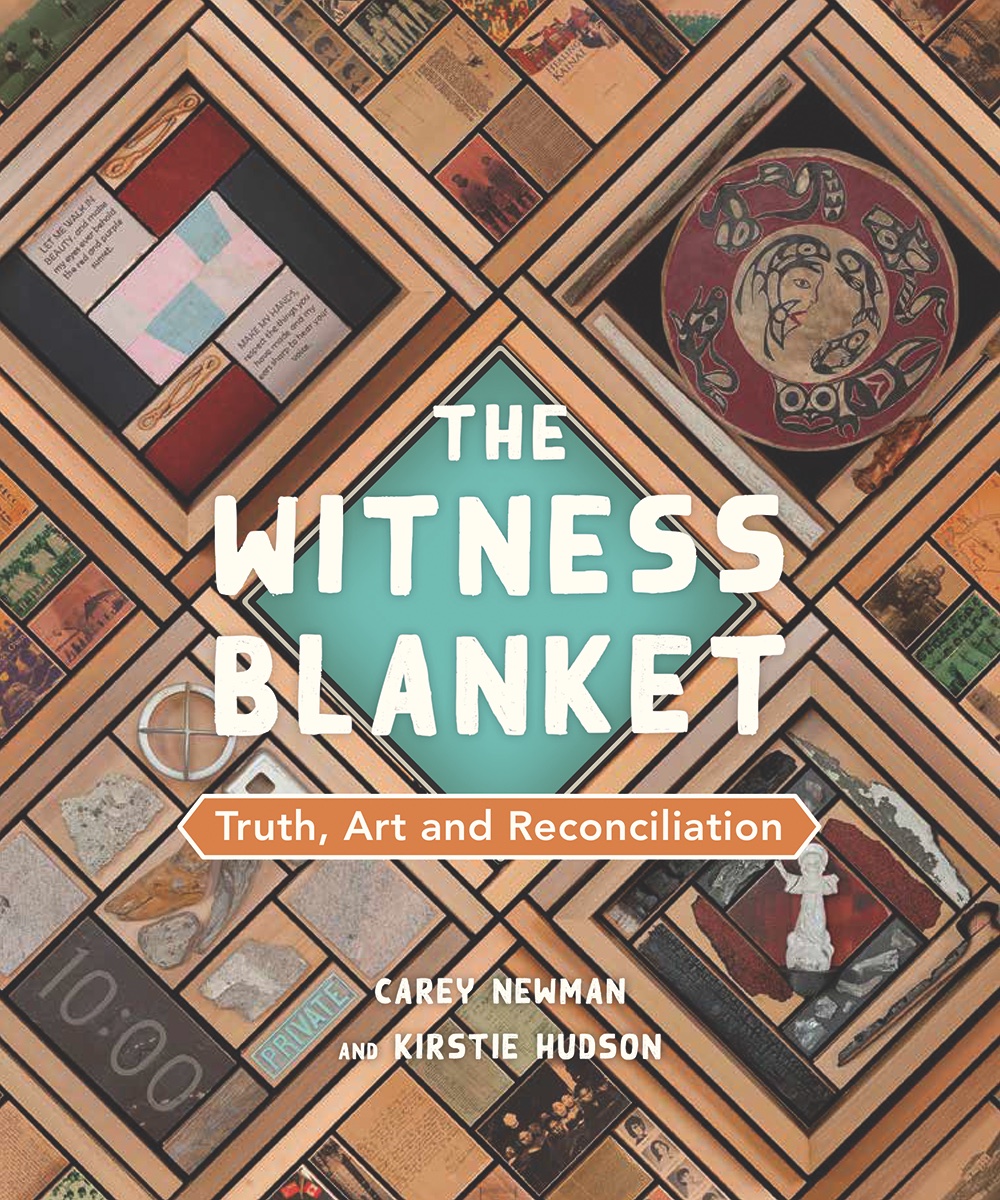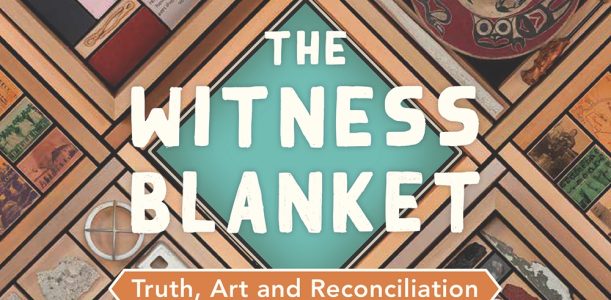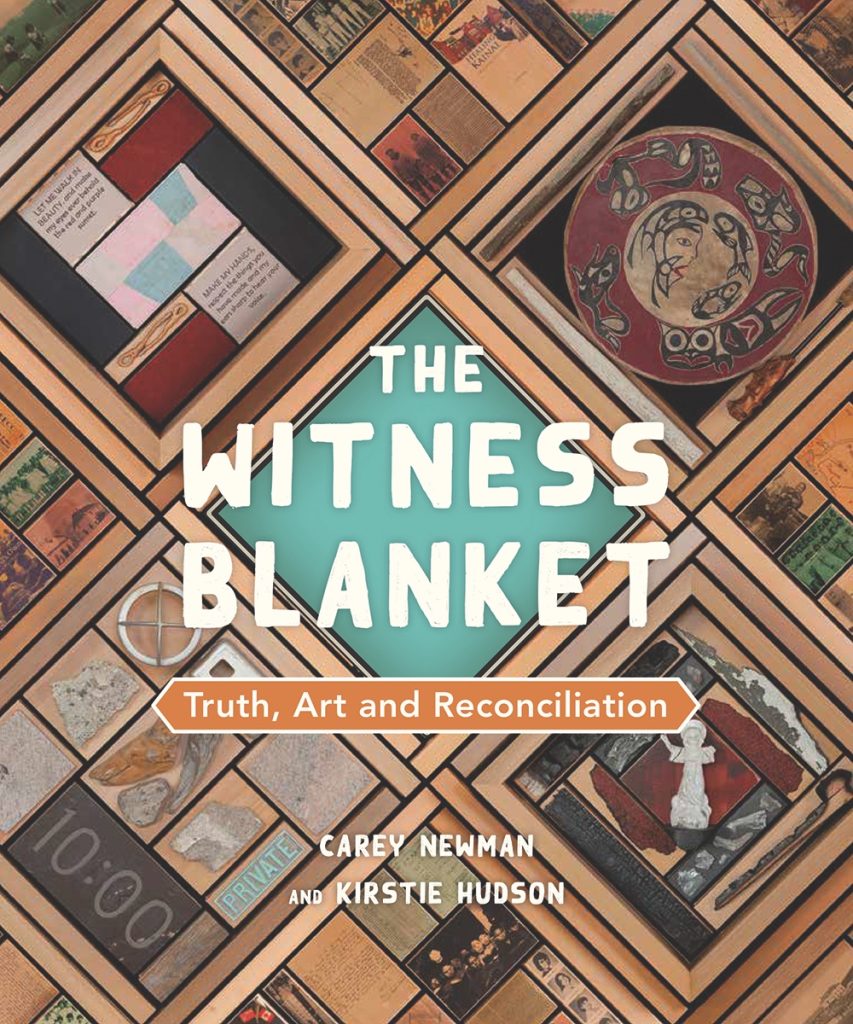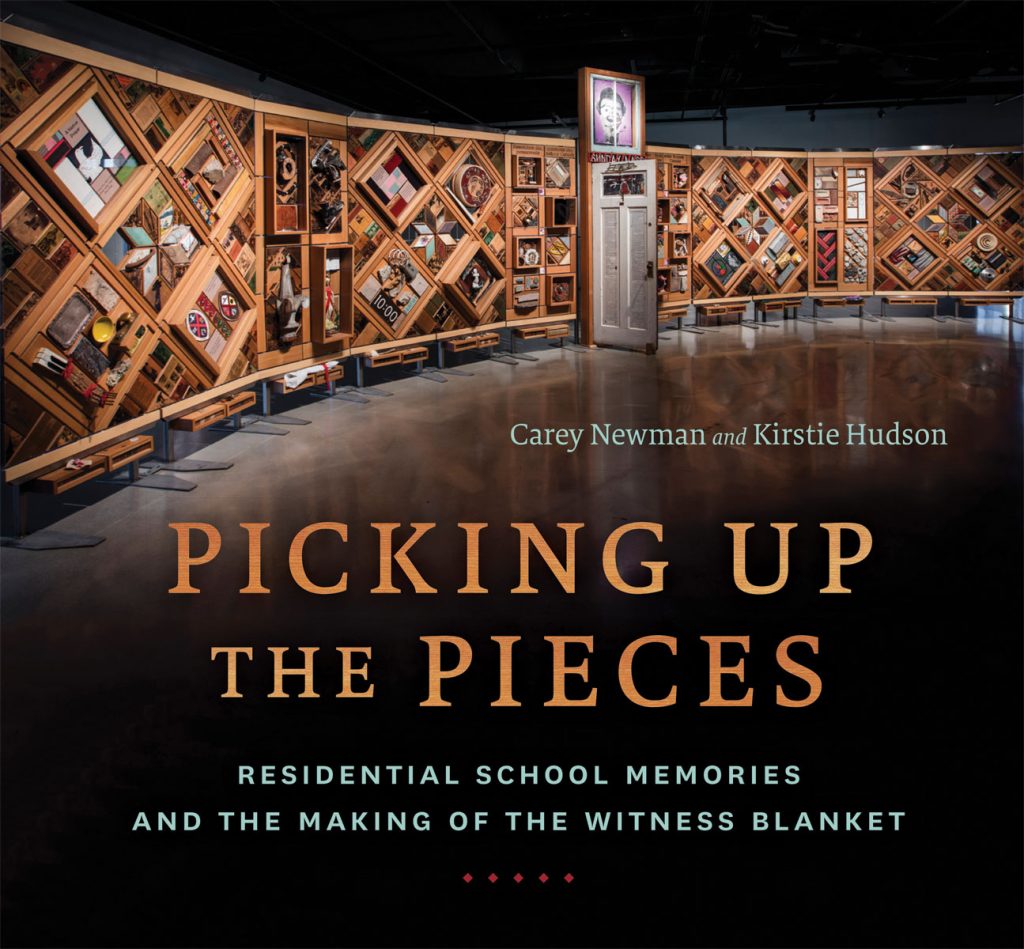The Witness Blanket: Truth, Art and Reconciliation shares the stories of Survivors and teaches young people about this important part of Canadian history.
The Witness Blanket: Truth, Art and Reconciliation by Indigenous artist Carey Newman and Kirstie Hudson is now available from Orca Book Publishers. This nonfiction book for middle-grade readers tells the story of the Witness Blanket, an artwork by Newman made up of objects connected to every residential school in Canada and stories from the Survivors who donated them.
The Witness Blanket comprises over 800 items from 77 communities and includes such objects as clothing, photographs, letters and even pieces of buildings. Newman explains the importance of bringing the pieces together into one shared work of art: “The pieces on the Witness Blanket each represent a different story, a different person and a different place. Through the stories of a few Survivors, we begin to understand the stories of all Survivors.”
Newman and Hudson previously told the story of the Witness Blanket in Picking Up the Pieces: Residential School Memories and the Making of the Witness Blanket, published in 2019 for adult readers. With a lower word count, simplified concepts and easily digestible content, The Witness Blanket is a reworking of Picking Up the Pieces for middle-grade readers that upholds the important message of this poignant piece of Canadian history. The information has also been updated to reflect the tragic discoveries at the sites of former residential schools of thousands of unmarked graves.
The original Witness Blanket is currently undergoing conservation at the Canadian Museum for Human Rights (CMHR) in Winnipeg while a true-to-scale replica is on tour across Canada. The touring schedule can be found here.
About the Authors:
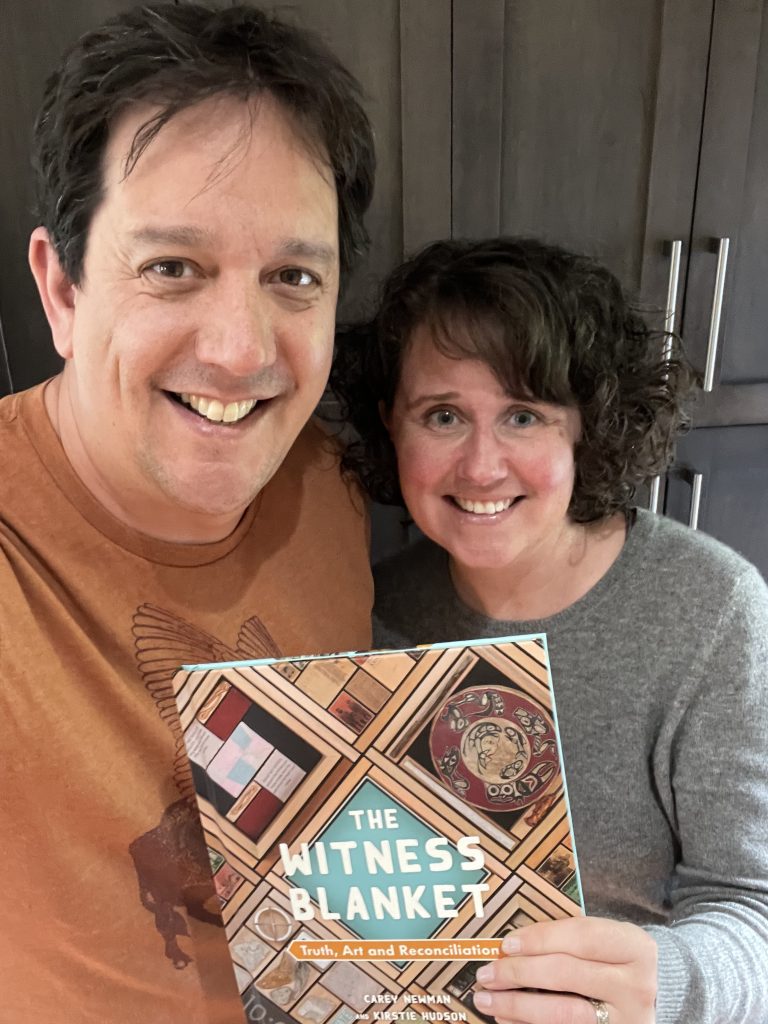
Carey Newman or Hayalthkin’geme is a multidisciplinary artist and master carver. Through his father he is Kwakwaka’wakw from the Kukwekum, Giiksam and WaWalaby’ie clans of Fort Rupert, and Coast Salish from Cheam of the Stó:lo Nation along the upper Fraser Valley. Through his mother he is English, Irish and Scottish. In his artistic practice he strives to highlight Indigenous, social or environmental issues. Carey was awarded the Meritorious Service Medal in 2017 and was named to the Order of British Columbia in 2018. He currently holds the position of Impact Chair of Indigenous Art Practices at the University of Victoria. Carey lives in Victoria, BC.
Kirstie Hudson is an editor and writer in Victoria, BC. She was a reporter and producer with the CBC in Toronto, Vancouver, Prince Rupert and Victoria. In her award-winning career as a journalist, Kirstie’s work was recognized with a Jack Webster Award, Radio Television Digital News Association Awards and a Gabriel Award. As an instructor at the University of Victoria and Royal Roads University, Kirstie shared her love of storytelling with students in writing, communications and journalism.
Praise for Picking Up the Pieces:
“Will educate and enlighten Canadians for generations to come. It’s a must-read for anyone seeking to understand Canada’s residential-school saga. Most importantly, it’s a touchstone of community for those survivors and their families still on the path to healing.”
—Waubgeshig Rice, journalist and author of Moon of the Crusted Snow
“Carey’s contributions to reconciliation are monumental and will help educate all Canadians as we move through this difficult period of growth and on to a healthy shared future.”
—the Honourable Judith Guichon, former lieutenant governor of British Columbia
“This heartbreaking, eye-opening and transformative visual chronicle of Carey Newman’s Witness Blanket…restores and re-stories the collective will of Survivors and their families to document, narrate and understand that history on their own terms, through the material objects and belongings that emerged from that harrowing history and its legacies.
—Daniel Heath Justice (Cherokee Nation), Canada Research Chair in Indigenous Literature and Expressive Culture, author of Why Indigenous Literatures Matter

